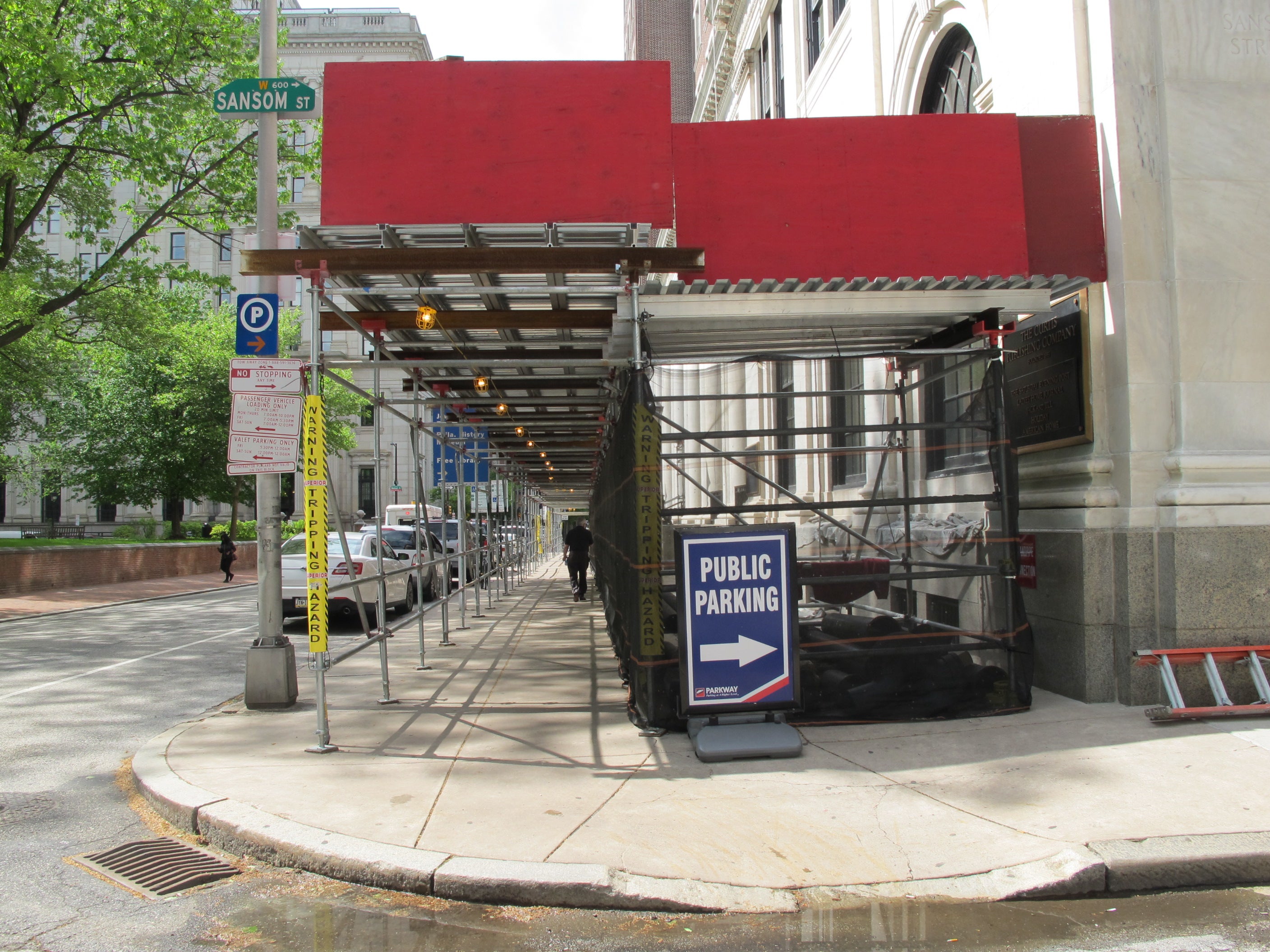Council supports pedestrian protections, considers project information and tax relief

Thursday’s City Council session ranged widely, taking in such subjects as naming Broad Street between Christian to Carpenter “Boyz II Men Boulevard” and a lengthy public comment period on the possibility of establishing a public bank to handle city deposits and payroll.
In between, a series of lower-profile bills wound their way through the chamber.
Bill Amending Pedestrian Protections Passes
Councilwoman Helen Gym’s pedestrian bill passed out of council. It amends legislation introduced by then-councilman Jim Kenney, which states that the Streets Department cannot give developers permission to close a sidewalk unless they offer a written explanation why a covered walkway for pedestrian safety is “impracticable.”
Gym’s bill expands the law to require developers to give a written explanation if they are closing even a portion of the sidewalk and, in situations when a covered walkway is not feasible, asking for the option of a protected walkway instead.
Support for the bill is, officially, almost unanimous. At the bill’s hearing in April, groups from the General Building Contractors Association to Feet First Philly, a pedestrian advocacy group, spoke in support of the proposed changes.
The Streets Department testified in favor as well, saying that it largely just put into legislative language what it was doing already.
“This bill codifies the existing Streets Department regulations regarding street closures,” said St. Martin Torrence, director of legislative affairs for the Department of Streets, at the late April hearing.
Gym told PlanPhilly that she is interested in solutions with more teeth in the near future. She’d like to see more resources directed to the department’s Right-of-Way unit, which enforces these issues. She’d also like to make it more expensive to fully close a sidewalk, cheaper to offer a protected pathway, and cheapest to cover a covered passageway.
Currently it costs $3-per-foot-per-week to completely lose a sidewalk in Center City or University City, but the price is halved if a walkway is established in the parking lane.
“We could make it more expensive to fully block a street,” says Gym. “We want to make it more expensive so the timing is limited and people are looking for other options before doing something like that.”
Drama Over RCO Information Bill
Councilwoman Cherelle Parker’s “Project Information Form” bill drew heated public comment.
Parker’s bill would require developers to offer relevant Registered Community Organizations (RCOs) a “Project Information Form,” which is meant to make sure all interested parties are aware of what a project would entail and how it will affect the community.
The bill is an attempt to help level the playing field between RCOs in wealthier areas, which often have design professionals like engineers or architects in their leadership, and other community groups that might lack such home team advantages.
A sample form, distributed in council, asks for simple matters like the address of the development as well as “Key Project Statistics” like the proposed land use of the parcels in question and the net change in the number of housing units. Later in the form, questions relate to the job creation projections during and after construction.
Although the bill received some pushback at a recent Rules Committee hearing, it faced its first hostile testimony today. The Chestnut Hill Community Association asked for more time to review the bill, saying it hadn’t been aware of the legislation until just before the Rules Committee hearing, said that numerous other RCOs did not have information about the bill either.
“We feel that this legislation as it is currently written will prove onerous to all parties involved, including city agencies, developers and RCOs,” said Celeste Hardester, development review facilitator for the RCO. “This bill goes well past what we use in Chestnut Hill, asking for information on job creation and additional dimensions that we are not convinced are instructive.”
But two supporters’ testimony followed on Hardester’s speech and amendments smoothing the bill’s connections to the Civic Design Review process were accepted unanimously. It is expected to be passed next week.
Re-assessing property tax assessments?
Councilwoman Maria D. Quiñones-Sánchez lives in Kensington’s Norris Square neighborhood, which is experiencing significant development pressure. At Thursday’s City Council session, she described encounters with her older constituents, who often reflexively fear any improvement to the neighborhood as a sign that they will soon be priced out.
Increasing property taxes are a central fear for many residents of Philadelphia’s redeveloping neighborhoods.
Once known as “The City of Homes,” Philly’s abundant supply of small rowhouses provides cheap home ownership opportunities, even in lower income areas like Norris Square. But as some of these areas are attracting development dollars and new residents, many longer-tenured residents fear that increasing property taxes will prove difficult to withstand on a fixed income, especially now that the city is dedicated to assessing property taxes on a year-to-year basis. (As opposed to the skittering, ad-hoc basis of recent decades.)
Quiñones-Sánchez acknowledges that there are a constellation of programs the city offers to ameliorate the pain from this conflict already, naming the Longtime Owner-Occupant Program, the $30,000 Homestead Exemption, and an extension of the Senior Freeze Program.
Now she has introduced a bill directing the Office of Property Assessment to consider the ways in which the 10-year property tax abatement may be incentivizing growth in neighborhoods and “artificially” driving up property tax assessments on surrounding blocks. But just how that might be factored into property assessments is yet to be determined.
“There is a state matrix, or formula, that determines how value is calculated,” Sanchez explained after the session included. “We must debundle that matrix and not over-inflate the value of neighboring sales.”
How that would work, exactly, is as yet to be determined.
Sanchez admitted she did not know exactly how much leeway existed within the formula, but that because it was created before the tax abatement it should be updated to take such development into consideration.
“We could utilize land value more as opposed to the actual structure that is abated,” said Sanchez. “I’ll leave it up to OPA and the administration to tell us what is the best way to do that formula…I just want to make sure the abatement isn’t heavily weighted and skews the market value for a block.”
WHYY is your source for fact-based, in-depth journalism and information. As a nonprofit organization, we rely on financial support from readers like you. Please give today.







